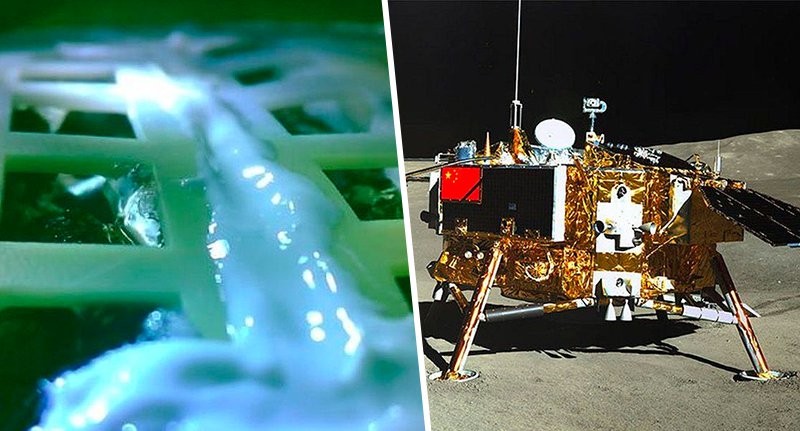You’ve heard of the man on the Moon – but what about a plant on the Moon?
Well, maybe not. That’s because it’s never been done before. Until now. A Chinese lunar lander named Chang’e 4 has succeeded in its mission to grow a plant on the Moon.
Plants have been grown on the International Space Station before, but never on the Moon.
A photo released today (15 January) by the China National Space Administration in association with the Chinese Lunar Exploration Program (CLEP) showed cotton shoots were growing well along with other germinated plants, just 12 days after Chang’e 4 touched down on January 3, 2019, carrying instruments to analyse the surface geology.
The mission to see if the Moon can facilitate plant growth is the first step, they say, to laying the foundation for a base on Earth’s only natural satellite.
It marks the first time any biological matter has grown on the Moon, and is seen as a significant step towards long-term space exploration.
Prof Xie Gengxin, the experiment’s chief designer, was quoted in the South China Morning Post saying:
We have given consideration to future survival in space. Learning about these plants’ growth in a low-gravity environment would allow us to lay the foundation for our future establishment of space base.
Fred Watson, Australian Astronomical Observatory’s astronomer-at-large, told the BBC the development was ‘good news’.
Watson added:
It suggests that there might not be insurmountable problems for astronauts in future trying to grow their own crops on the moon in a controlled environment.
I think there’s certainly a great deal of interest in using the Moon as staging post, particularly for flights to Mars, because it’s relatively near the Earth.
Natural and unsupported survival on other planets such as Mars, the site of the MarsOne project which will see a number of ordinary people attempt to inhabit the planet with technological aide, has not been possible.
However, China is also aiming to send a spacecraft to Mars next year, following its successful mission to the far side of the moon.
The Moon was first reached in September 1959 by the Soviet Union’s Luna 2, an unmanned spacecraft.
Ever since Buzz Aldrin and Neil Armstrong took the first human steps on the Moon in 1969, as part of the Apollo 11 mission, we’ve been pretty obsessed with what mysteries the satellite holds.
In fact, 25 million people watched the two astronauts and fighter pilots plant the American flag in the satellite – the first example of human influence on the moon – in America alone.
The televised event was beamed to 33 more countries worldwide and one million people turned up to watch the launch of Apollo 11 via a Saturn V rocket from the highways and beaches in the vicinity the Kennedy Space Center launch site.
Since that momentous occasion, we’ve progressed further with space exploration and in our understanding of the moon, the fifth-largest natural satellite in the Solar System, formed about 4.51 billion years ago, not long after Earth.
The Chang’e 4 is the first mission to land on and explore the Moon’s dark side, facing away from Earth. Another small seed for mankind, hey?






